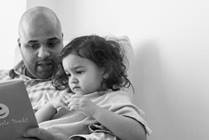Search Results
Viewing: 361-370 of 1460 | All

Condition
Pertussis (Whooping Cough)
In this Helping Hand™ document, we discuss pertussis, also known as whooping cough. Pertussis is an infection of the respiratory tract caused by bacteria. The bacteria are easily spread by breathing in droplets from an infected person who coughs or sneezes. Call 911 if your child stops breathing.

Condition
Leukemia (ALL and AML)
Leukemia (ALL and AML) is the most common form of childhood cancer. It affects the tissues of the body which make the blood cells and the bone marrow. When leukemia strikes, the body makes an abundance of abnormal white cells that invade the marrow and crowd out the normal healthy blood cells.
Article
Impedance pH Monitoring
Impedance pH Monitoring measures the length of time it takes for your child’s stomach contents (acid or non-acid) come back up into his or her esophagus.
Article
Aspen® Cervical Collar
A cervical collar helps hold the neck in place. The neck area of the backbone is called the cervical spine. When there’s an injury to the cervical spine, the neck needs to be held in place so it can heal.

Condition
Food Allergy and Parenting
This Helping Hand™ offers advice on parenting a child with food allergies. You have watched your child’s food and surroundings from an early age. You have also worked hard to speak to others, such as family, friends, and your child’s school, about keeping them safe from their allergen(s).
Article
Guided Growth Surgery
Guided growth, or hemi-epiphysiodesis, is a procedure that can be used to gradually correct angular deformities, such as "bowed legs" and "knock knees," in children’s bones. Guided growth slowly straightens the bone by tethering (guiding) the growth plate on one side of the bone.
Ringworm of the Scalp (Tinea Capitis)
Tinea capitis (TIN-ee-uh CAP-i-tis) is an infection of the scalp which is caused by a fungus. It is also called ringworm.
Article
Birth Control Pills
Combination oral contraceptive pills are a form of daily birth control that has the hormones estrogen and progestin.
Article
Auditory Brainstem Response (ABR) with Sedation or Anesthesia
This Helping Hand™ explains the process of an auditory brainstem response (ABR) with light sedation or anesthesia.
Article
Epinephrine Auto-Injectors for Severe Allergic Reaction (Adrenaclick®, Auvi-Q®, EpiPen®, Symjepi®)
When and how to use an EpiPen if your child has a severe allergic reaction.
